 Image search results - "ja" Image search results - "ja" |
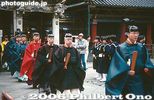
Also called "Sennin Gyoretsu" (1,000-person Procession 千人行列), this is Nikko's largest festival held on May 17-18. The highlight is a long procession of over 1,000 people dressed in various costumes.The three portable shrines are dedicated to the spirits of Tokugawa Ieyasu, Toyotomi Hideyoshi, and Minamoto Yoritomo. Photos start with May 17 at Toshogu Shrine, when priests gathered for a ceremony. 発興祭
|
|
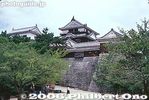
Matsuyama Castle
|
|

Okazaki Castle towerThe castle was dismantled during the Meiji Period and the area was made into a castle park. The castle tower was later rebuilt in 1959.
|
|

Hakata Station, gateway to Kyushu
|
|

Uwajima Castle tower (Important Cultural Property), Ehime Prefecture.
|
|

Occupying a huge plot of land in the center of the city, Kanazawa Castle has undergone extensive renovations and reconstruction. The main castle buildings are now magnificently restored.
|
|

JR Chiba Station and Yokosuka Line
|
|

Established in 1617, Tsukiji Hongwanji temple is the Tokyo headquarters of the Nishi Hongwanji Jodo Shinshu sect. The present temple, based on Indian architecture, was built in the 1930s.The temple is the only one in Japan which is under the direct control of the sect. Its head priest is the Monshu Abbot himself. April 8 is observed as Buddha's birthday, called Hana Matsuri ("Flower Festival) in Japan.
|
|

Yasukuni Shrine is Japan's most prominent shrine for the war dead. Near Kudanshita Station on the Tozai Subway Line. This is the first giant torii
|
|
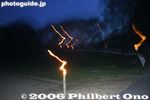
Held annually on May 4, the Misaki Shrine Fire Festival (hi-matsuri) has local people carry 2-meter long torches from their homes to the shrie where a 5-meter tall pile of bamboo is lit to make a towering inferno.A taiko drum is also carried and beaten.
|
|

Yasukuni Shrine during the Mitama Matsuri before dark.
|
|

Held for two evenings on Aug. 14-15 during the obon season, people light their torches at Gosha Shrine and proceed to Hibarino park where the torches are thrown up to a large pine tree. The more torches get stuck on the tree, the better the next harvest.This is Hibarino park. The pine tree on the right of the small hill is the target for the torches. This park also serves as the Otabisho during the Hino Festival.
|
|

Kanayama Jinja Shrine is a small shrine within the grounds of the Wakamiya Hachimangu Shrine near Kawasaki Daishi Station. On the first Sun. of April, it holds this now-famous Kanamara Festival nicknamed the Phallus or Fertility Festival. Festival starts at 11 am. But a large crowd was already there well before that time. Entrance to shrine on the day of the Kanamara Festival. (If you're below age 18, please leave now.)
|
|

At 2 pm, the 18 portable shrines gather at the Ohara Fishing Port. 大原漁港に参集
|
|

The Kokugikan as seen from JR Ryogoku Station platform.
|
|

Toyama Castle 富山城
|
|

Monorail to Chiba Koen Station 千葉公園駅
|
|

Entrance to Honmaru Goten palace, Kawagoe Castle.
|
|
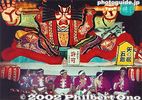
Nebuta are giant, wire-frame, paper lanterns shaped in various legendary and macho characters.The Aomori Nebuta Matsuri is held in Aomori City in Aomori Prefecture during Aug. 2-7. Nebuta are giant, wire-frame, paper lanterns shaped in various legendary and macho characters such as samurai warriors, demons, and gods. They are fantastic works of art dramatically illuminated from the inside. The floats are paraded along the main streets of the city near Aomori Station every night of the festival.
From August 2 to 6, the Nebuta parade is held from 7 p.m. to 9 p.m. On the 2nd and 3rd, the parade is geared for the many children who participate by pulling the floats. About 15 large Nebuta floats and some small Nebuta floats for the children are paraded.
The festival's peak period is from the 4th to the 6th when over 20 large Nebuta floats make their rounds. Be sure to see the festival on one of these three nights.
On the 7th, the last day, the parade is in the afternoon from 1 p.m. to 2:30 p.m. Later in the evening, the Nebuta floats are put on boats to be highlighted by a fireworks display.
The festival is designated by the government as an Important Intangible Folk Culture Asset and not to be missed if you have the chance. It's well worth the trip up north.
|
|

Fukuyama Castle tower
|
|
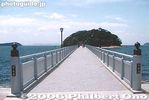
400-meter long bridge to Takeshima island near JR Gamagori Station. The island is made of granite. Circumference is 680 meters. There's a walking path around the island.
|
|

Rabbit Island
|
|

The festival is held along a straight, 800-meter section of San'o Odori Road, a 20-min. walk from Akita Station.In the evening, the main event starts at 6:38 p.m. with a taiko drum-beating performance or minyo dancers on San'o Odori Road. At 7:17 p.m., some 200 kanto are carried into the street to the sound of flutes and taiko drums. At 7:40 p.m. following a brief address by the city's mayor, the performance begins as the kanto are raised all at once.
|
|
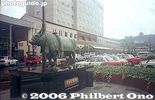
Fighting bull statue in front of Uwajima Station.
|
|

Women at the starting line for triathlon
|
|

Tsukiji Hongwanji temple gate with wisteria crest.The emblem is a wisteria flower and symbol of the Jodo Shinshu sect.
|
|

Path to shrine
|
|
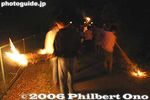
Procession of local residents carrying torches to the shrine. Map
|
|

Kameyama Castle was built by Akechi Mitsuhide in the 16th century as his base for his conquered Tanba region.
|
|
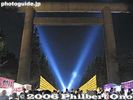
Yasukuni Shrine's main torii during Mitama Matsuri
|
|

Kiso River with Inuyama Castle in the distance
|
|

Entrance to Gosha Shrine. 五社神社
|
|

Shrine banners and cherries in full bloomThe red banner says "Kanayama Jinja" with an phallus (erect) logo on the top.
|
|
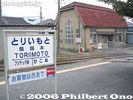
Although the Honjin is long gone, there are a few reminders of its shukuba past. Near Ohmi Railways Toriimoto Station. Map
|
|

They run around while carrying a portable shrine.
|
|

Koganei Park sakura
|
|

JR Chiba Station platform
|
|

View of Chiba Park from monorail. 綿打池
|
|

Kitain Main hall, Kawagoe
|
|

Pulling the float, Narita Gion Matsuri
|
|

"Blue Ocean Waves" (青海波)They performed four numbers. This first one was called "Blue Ocean Waves" performed by five geisha.
|
|
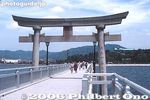
Torii on Takeshima island
|
|
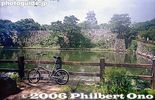
My bicycle
|
|
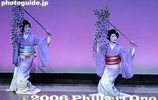
1. Fuji Murasaki (Purple Wisteria)
|
|
|
|

Torii at Umamioka Watamuki Shrine in Hino, Shiga Pref.
|
|
|

Carrying back a single sculling boat
|
|

Promenade to the shrine
|
|

Gosha Shrine torii
|
|

Pumping (or humping) the...
|
|
|

Chiba Park approach
|
|

Children lead the way for a float at Kawagoe Festival.
|
|

According to one story, the Nebuta has its roots in the 8th century.According to one story, the Nebuta has its roots in the 8th century when there was a rebellion in Ezo (Hokkaido). Ordered by Emperor Kanmu to quell the rebellion, generalissmo Sakanoue no Tamuramaro went to Ezo. However, he failed to capture the elusive chief of Ezo who went into hiding in the mountains.
Sakanoue then set up a trap with large votive lanterns which were lit and accompanied by taiko drums and flutes. This lured the curious Ezo chief out of hiding and led to his capture. The large lanterns were the forerunner of the Nebuta.
|
|

Tired from walking, Narita Gion Matsuri
|
|

Statue of Takeda Shingen.
|
|

Lead float with Edo festival music played by children. The names of the children playing are written on the red lanterns hanging above. Kodomo Edo-bayashi yatai 先導 子供江戸囃子屋台
|
|
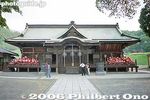
Shorinzan Daruma Temple 少林山達磨寺Daruma offerings on both sides of the temple.
|
|

Shinkyo Sacred Bridge, Nikko 神橋
|
|
|
|
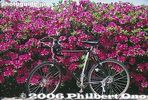
My bicycle somewhere in Gamagori.
|
|

Statue of Omura Masujiro (1824-1869) 大村益次郎, founder of Japan's modern army. Also pushed for the establishment of Yasukuni Shrine.
|
|

The torch procession rings out.
|
|

Kakegawa, Shizuoka
|
|

Spotlights create a silhouette of the statue of Omura Masujiro (1824-1869) 大村益次郎, founder of Japan's modern army.
|
|

Statue of castle founder and 1st lord, Yuki Hideyasu 結城秀康
|
|
|

The festival is wildly popular with people from overseas.The shrine had various phallus props to pose with.
|
|

They keep going round and round. Quite rowdy.
|
|

Pagoda at Kitain temple, Kawagoe
|
|
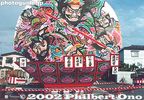
Fan-shaped Neputa float.The painted picture on the front of the Neputa depicts mostly warriors and on the back are beautiful courtesans.
|
|
|
|
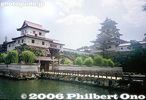
Imabari Castle 今治城
|
|

1. Fuji Murasaki (Purple Wisteria)
|
|
|
|
|

The procession basically consists of two columns: The Hon-retsu which includes the procession's highest-ranking official called Chokushi. It consists of men. The second and longer column is the Saio-dai-retsu consisting of women.
|
|

Nakano (Hino Castle) in Hino, Shiga Pref. The castle was built in 1534 by Lord Gamou Sadahide (1508-1579).
|
|

Towering inferno of bamboo on fire. The shrine has a 5-meter tall pile of bamboo which is lit to make a towering inferno within the shrine grounds. Very dramatic.
|
|

A bon dance around the base of the statue.
|
|

Stairs to Kakegawa Castle tower
|
|

Shimizu Bank
|
|

Haritsuna Shrine
|
|

Entrance to Urakuen GardenThis garden has a few tea houses including one called Jo-an, a National Treasure. THe garden is close to Inuyama Castle and worth a visit. Admission 1,000 yen.
有楽苑
営業時間 9:00〜17:00(3/1〜7/14 ・ 9/1〜11/30)
9:00〜18:00(7/15〜8/31)
9:00〜16:00(12/1〜2/末日)
休日 無休 入場料 大人1,000円(呈茶別500円)
〒484−0081
愛知県犬山市御門先1
TEL 0568(61)4608
交通 名鉄犬山線犬山遊園下車徒歩7分
|
|
|

Dickhead hat. Actually, I don't know what they call it, but that's what I call it.
|
|
|

Shirakawa-go 白川郷
|
|

Wada House, Shirakawa-go
|
|

White weeping cherry blossoms
|
|

Toyama Castle
|
|

The floats were jerked left and right and spun around.At 7:00 p.m., the taiko drum-beating started and the floats left the starting point one by one. The beat of the taiko drums was the same as that in the Nebuta Matsuri. A few men stood on the top of the large Neputa and collapsed the hinged, top portion to clear overhead power lines. The floats were jerked left and right and spun around.
|
|

Preparing unagi eel, Narita, Chiba. Also see the video at YouTube.Slicing it in half lengthwise.
|
|
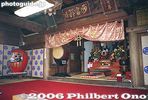
Inside the Daruma temple, Takasaki.
|
|

1. Fuji Murasaki (Purple Wisteria)
|
|

Second torii
|
|
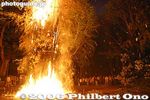
Misaki Shrine Fire Festival in Aisho. The shrine has a 5-meter tall pile of bamboo which is lit to make a towering inferno within the shrine grounds. Very dramatic. Also see the video at YouTube.
|
|
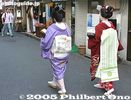
A geisha/geiko and maiko head to the theater to see the Kamogawa Odori. Notice the different obi sash on the back.A maiko is an apprentice geisha. Her obi sah on the back is long, as well as her sleeves.
|
|
|

Sanko Inari ShrineThe shrine provides a short cut to the castle.
|
|

Maruoka Castle tower
|
|

Priests appear
|
|

Pile of straw to be lit. The fire is used to light all the torches.
|
|

Carving daikon. Anybody can join in and carve. 大根削りLater to be auctioned off.
|
|
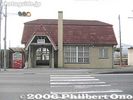
Toriimoto Station building built in 1931 when the station opened and still in use.
|
|

A man who got bumped and fell is quickly brought to his feet by other people.
|
|

White weeping cherry blossoms
|
|

The Peace Statue was built in Aug. 1955, the 10th anniversary of the bombing. The Peace Statue was modeled after popular wrestler Rikidozan.
|
|

Striping off the boney spine.
|
|

Shimada hairstyleStandard hairstyle for geisha. This a wig.
|
|

Former yokozuna Taiho, Takanosato, Kotozakura, and Wakanohana watch intently.
|
|
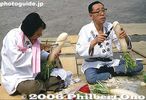
Carving daikon (old photo). These men were really good at carving the daikon.
|
|

Boat to Rabbit and Monkey islands (no longer in service)
|
|

Chiba Castle
|
|
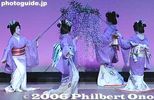
1. Fuji Murasaki (Purple Wisteria) by Kagurazaka geisha
|
|

You wash your mouth hands here. Built in 1940 by Japanese living in the US. 大手水舎
|
|
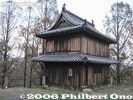
Fukuoka Castle, Kinen Turret祈念櫓
|
|
|
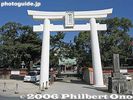
Karatsu Shrine
|
|

Azaleas in full bloom along the lake edge
|
|
|

Shimizu Bank's relief of Kazutoyo and Chiyo
|
|

Twin turrets of Akashi Castle
|
|

Way to Kokugikan. The guarded side gate on the right is for sumo wrestlers.
|
|

White and red torii
|
|
|

Tokiwa Shrine, MitoDedicated to Lord Mitsukuni Tokugawa, the second lord of Mito, and Nariaki Tokugawa, the ninth lord of Mito and the one who built Kairakuen Garden.
|
|

Pretty CureKids could have their picture taken with these characters.
|
|

Nice mikoshi.
|
|

Mansion of Mitsui Hachiroemon, one of the museum's must-see buildingsFounder of the Mitsui zaibatsu.
|
|

Kura-zukuri style architecture. Local merchants built these earthen buildings after the Great Fire of Kawagoe in 1893. 蔵造りの町並み
|
|
|
|
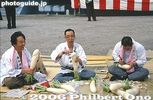
Carving daikon. Since some activities are conducted on the ground, the festival is also called Jibeta (Ground) Matsuri.Once upon a time, the festival was still mostly a local event with much fewer people.
|
|
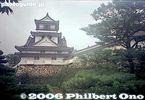
Kochi Castle tower
|
|

Baby Buddha statueLadles are provided for pouring the sweet tea over the Buddha. Sweet tea is also provided to worshippers. It symbolizes the sweet rain that fell when the Buddha was born.
|
|

Gate built in 1934. 神門
|
|

Otowa Castle's hilltop center, now a playground.In Hino, Shiga Pref.
|
|
|

Geiko and maiko in front of Pontocho Kaburenjo theater
|
|

Demonstration of matchlock guns, Azuchi Nobunaga Festival.Even these people had to obtain police permission to bear and fire these feudal-era guns.
|
|

Spotlights hit the torii.
|
|

Inside Jo-an tea ceremony house, a National Treasure
|
|

Kaeru frog to wish you a safe return. 東門院
|
|

Torches
|
|

Kids could have their picture taken with these characters.
|
|

One thing unusual about this festival is that they carry the mikoshi with their hands and arms only, and not on their shoulders.
|
|

Inside Mitsui Hachiroemon mansion
|
|

Musashimaru right after I shook his hand.
|
|
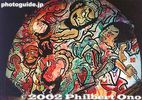
Closeup of a Neputa float.Theories concerning the origin of the Neputa are identical to those of the Nebuta. However, in the 1880's, the Neputa gradually changed from human figures into a fan shape. The floats have come a long way since then. Candles have been replaced by generator-powered lights and the washi paper has been replaced by washi paper blended with nylon. The festival is designated as an Important Intangible Folk Culture Asset.
|
|
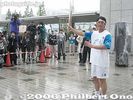
About 11 am: Here we go folks, the first of 136 runners in Tokyo.
|
|

Asashoryu sips water offered by Ozeki ChiyotaikaiAs soon as Asashoryu entered the arena, many wrestlers went up to him to offer water as a show of respect.
|
|
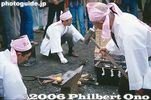
Forging a steel phallus (old photo)The demon living in the vagina of the women bit the man's phallus each time. So one guy made a steel phallus and the demom broke his teeth.
|
|

1. Fuji Murasaki (Purple Wisteria)
|
|

Back view of second torii
|
|
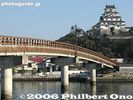
Jonai Bridge to Karatsu Castle城内橋
|
|
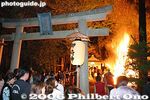
Torii at Misaki Shrine Fire Festival.
|
|

Chichibu Shrine
|
|
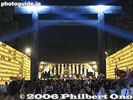
At night, 30,000 lanterns light up. A real summer spectacle.
|
|

Jo-an tea ceremony house, a National Treasure. Built in 1618 by Oda Uraku, one of the greatest tea ceremony masters and younger brother of warlord Oda Nobunaga.Jo-an is one of Japan's three most famous tea ceremony houses. 如庵
|
|

Maruoka Castle
|
|

Beachgoers frolick in the lake as the rowing boats arrive.
|
|

After it gets dark, the pile of straw is lit and people come to light their torches.
|
|

Taiko drum tower
|
|

Tossing a portable shrine, a common sight during the festival.
|
|

Chiba Station and monorail
|
|

Cherry blossoms and Chiba Castle
|
|
|

Asashoryu and TochiazumaAfter offering water, Tochiazuma shares a laugh with the yokozuna.
|
|

About Genova ジェノバの紹介Genova (or Genoa) is a port city on the west coast of Italy. It is the birthplace of Christopher Columbus. For 2004, it was designated as the European City of Culture. From Milan, it takes about 90 min. to reach Genova.
ジェノバは、イタリアの北の西海岸にある港街です。コロンブスの出身地でもあります。ミラノから電車で約1.5時間かかります。
|
|

Numerous azalea bushes
|
|

Meaning "Long Life Temple," Chojuji's Hondo temple hall is a National Treasure. It belongs to the Tendai Buddhist Sect and one of the Konan Sanzan Temple Trio along with Jorakuji and Zensuiji Temples.Chojuji temple Entrance gate + fall colors.
|
|

Kusatsu-juku was the fifty-second station on the Tokaido Road (following Ishibe-juku) and the sixty-eighth station (following Moriyama-juku) on the Nakasendo Road. During the Edo Period, Kusatsu was an important post town at the crossroads of both roads.The roof is shaped like a Honjin lodge, with a gate. 草津駅
|
|
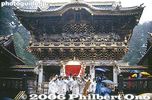
Coming down from Yomeimon Gate (National Treasure). 陽明門The gate is a National Treasure and symbol of Nikko.
陽明門
|
|

Kawagoe Festival
|
|

Inside monorail
|
|

1. Fuji Murasaki (Purple Wisteria)
|
|

Children dressed for the chigo parade (photo session), Tsukiji Hongwanji, Tokyo
|
|

Imperial crest on gate door
|
|
|

Ohmi Railways Toyosato Station. MAP
|
|
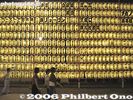
The lanterns are lit by lightbulbs, not candles.
|
|

Sugawara house from Tsuruoka city, Yamagata Prefecture. In heavy snow, the front window was used as the door.
|
|

Inuyama Castle tower
|
|
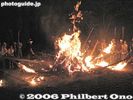
Lighting torches.
|
|

Standing room only at Wakamiya Shrine
|
|
|
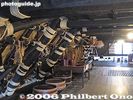
The bottom ends of these beams are pegged into a point (komajiri) resting on another cross beam. Wada House, Shirakawa-go
|
|

Farmer's house
|
|

Way to Tagata Shrine from Tagata Jinja-mae Station. Shrine famous for numerous phallic objects used as offerings to the gods. The 1500-year-old shrine worships a deity called Tamahime-no-Mikoto who was a daughter of a powerful local lord from the 5th c.The Honen-sai or Honen (Hounen) Matsuri is held by Tagata Jinja on March 15 to pray for an abundant harvest. "Honen" literally means "Year of abudant harvest." Since a giant penis is used as an offering, it is popularly called the "penis festival."
The shrine is near Tagata Jinja-mae Station on the Meitetsu Railways' Komaki Line. From Shin-Nagoya Station or Shin-Gifu Station, go to Inuyama Station and transfer to the Komaki Line.
|
|

Tagata Jinja-mae Station on Meitetsu Railways' Komaki Line, a few stops from Inuyama Station. The shrine is a 10 min. walk from the train station.
|
|
|

Magistrate Procession 奉行
|
|

The Takaoka Daibutsu stands 15.85 meters high, weighing 65 tons. Japan's largest copper statue. Takaoka, Toyama
|
|
|
|

Ceiling
|
|
|

Public phone
|
|

These days, they have 10,000 dancers from 70 dance groups and over 1 million spectators. Also see the video at YouTube.いろは連
|
|
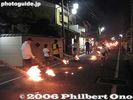
The torch procession goes from Gosha Shrine to Hibarino park.
|
|

Oarai Isosaki Shrine's giant torii
|
|

Model at Nikon booth
|
|

Packed path to Wakamiya Hachimangu Shrine
|
|

A group of men carry a red and white pole in front of Inazawa Station, on their way to Konomiya Shrine.
|
|

Sumo wrestler and sumo stable banners
|
|

This is where they offload fish.
|
|

Festival spectators come by the busload, including people from US military bases such as Yokota.
|
|

Tagata Shrine torii and entrance 田縣神社
|
|

Kyoto Station
|
|

JR Chiba Station
|
|

Psst, wanna know a secret? Kitain Temple, Kawagoe
|
|
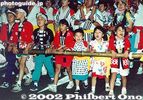
Children's night at Aomori Nebuta MatsuriOn the 2nd and 3rd, the parade is mainly for children who participate by pulling the floats. About 15 large Nebuta floats and some small Nebuta floats for the children are paraded.
|
|

Narita Gion Matsuri
|
|

Friends after allKyokushuzan chats with fellow Mongolian Asashoryu.
|
|
|
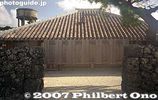
Okinawan house, Taketomi. Taketomi is a National Important Traditional Townscape Preservation District (重要伝統的建造物群保存地区).
|
|

Kannon and bridge, Takasaki, Gunma
|
|

Right balcony of Daruma temple, Takasaki
|
|

1. Fuji Murasaki (Purple Wisteria)Dancer's name is Maiko 舞子
|
|

Cherry blossom path to shrine
|
|

Taiko drum beating
|
|

Former home of Omi merchant Tonomura Shigeru (外村 繁邸). MapTonomura Shigeru (外村 繁), Tonomura Uhee (外村 宇兵衛), and Nakae Jungoro (中江 準五郎)
|
|

Kitamura house brought from Hadano, Kanagawa
|
|

Tanabata streamers festoon the gate.
|
|

Inside tea ceremony house
|
|

Kokugikan
|
|
|

Prayers to the Kanamara Boat portable shrine かなまら舟神輿 神輿御霊入れ式Before the portable shrine is taken out to be paraded around town, the god of the shrine must be transferred to it. This is what the head priest is doing.
There are three portable shrines (called mikoshi). The Kanamara mikoshi (the original portable shrine), Kanamara-bune mikoshi (shaped like a boat), and Elizabeth mikoshi (pink giant). All three are carried during a procession around town. The Elizabeth mikoshi is carried by she-males. ("New half" in Japanese. Go ahead and laugh if you want.)
|
|

Raising a pole in front of Inazawa Station
|
|

Ohara beach where the portable shrines will be carried into the ocean. 大原海水浴場
|
|

Entering Tagata Shrine, dedicated to Tamahime-no-Mikoto (daughter of a local feudal lord) and Mitoshi-no-Kami (deity of harvests).
|
|

Tagata Shrine stone marker
|
|
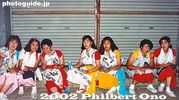
Some female haneto taking a break after the festival.
|
|

Narita Gion Matsuri
|
|

Her big round eyes makes her look like a real doll.
|
|
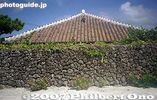
Okinawan house and rock wall, Taketomi
|
|

Daruma closeup
|
|
|

Steel sculpture depicting Ishida Mitsunari giving tea to Toyotomi Hideyoshi. Ishida-cho, Nagahama, Shiga Pref.
|
|
|
|

Kyoto Tower at night.
|
|
|

Kitamura house
|
|

Takahata Fudoson Kongoji temple, Hino, Tokyo 高幡不動尊金剛寺
|
|

Kokugikan ticket office (right). Ticket prices range from 2,100 yen to 14,300 yen.
|
|

This is a pose when Tora-san goes to the Shibamata Station and he looks back to his sister Sakura who calls him.
|
|

During the procession, children use sticks to hit the torch flame. They had great fun.
|
|

Red and white plum blossoms
|
|

Pentax model
|
|

Horyuji temple, Nandaimon Gate, National Treasure 南大門(国宝)
|
|

Prayers to the Kanamara-bune mikoshi かなまら舟神輿Before the portable shrine is taken out to be paraded around town, the god of the shrine must be transferred to it. This is what the head priest is doing.
|
|
| 7740 files on 31 page(s) |
1 |
 |
 |
 |
 |
|